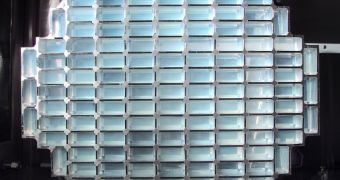A new study involving the origin of the material that composes a comet shows that cometary dust is created in the close proximity of a star during its first stages of life, which is being dissipated towards the outer regions of the solar system as the planetary formation process draws to an end. Material for these new finding was provided by the Stardust spacecraft, launched by NASA in 1999, which rendezvoused with comet Wild-2 in 2004 in order to collect debris emanating from its main body.
The Comet Wild-2 spacecraft containing the precious cargo returned to the surface of the Earth in January 2006, and the collected material was sent to laboratories all over the world for analysis. Helium and neon isotopes found inside the dust grains suggested that, as dust was being pushed towards the outer regions of the solar system by the solar wind, it was collected and incorporated into comets orbiting beyond planet Neptune.
Such findings are especially important while taking into consideration the fact that scientists mostly believe that the atmospheres of the inner smaller rocky planets might have been brought by comets, during cosmic collisions. The studied comet, Wild-2 is a short-period orbiting comet, thus it is believed to have originated in the Kuiper's belt, a region of space beyond the orbit of the planet Neptune, thought to be filled with comets and cometary debris.
More than five years after its launch, the Stardust spacecraft approached the comet, and deployed a probing instrument consisting of an array aerogel block that had the role to capture parts of the debris coming from the main body of the object.
Soon after its twenty minute exposure to the stream of particles traveling at about 20,500 kilometers per hour, the Comet Wild-2 spacecraft was sent off its way back to Earth, a journey that took about two years. Samples of dust only a fraction of a gram in weight were sent to be analyzed through spectroscopic methods, meaning heating the dust grains to more than 1,400 degrees Celsius in order to turn the material into an ionized mix of matter to study the light given off by the atoms, thus to determine the chemical composition.
Results of the experiments showed that the particle were about 4.6 billion years old, which is relatively close to the age of the Sun and the solar system nevertheless. To make an analogy of the age of the matter recovered from the main body of the comet Wild-2, scientists argue that, if the Sun's age is approximated to 50 years, then the dust grain particles would have formed somewhere in the first four days of its life.

 14 DAY TRIAL //
14 DAY TRIAL //